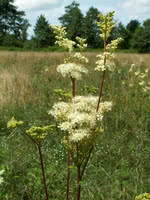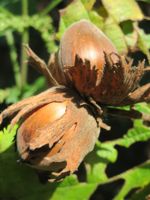Mon-Fri 9am - 5pm Mountain time
Meadowsweet vs European Hazelnut
Filipendula ulmaria
Corylus avellana
CUSTOM GROW
NOT AVAILABLE THIS SEASON - MIGHT RETURN
Meadowsweet gets its name from its sweet fragrance from the creamy white flowers. It is a large upright herbaceous perennial shrub. They bloom in early summer, and with the right conditions may remain throughout the season.
Take care of where you’re planting Meadowsweet as it is known to spread.
European Hazelnut is a large shrub that is native to Europe. It is known for its edible nuts that ripen in late summer to early fall. The nuts can be eaten raw or roasted and have a sweet, earthy flavour. Nut production can start as early as 2-3 years but typically takes until at least 4 years for significant yields.
Catkins appear in late winter to early spring and as they release pollen it attracts bees and other pollinators. Since male and female flowers bloom at different times, multiple shrubs will have to be planted for cross pollination. It is recommended to plant European Hazelnut with other hazelnut varieties such as Beaked Hazelnut, Frank, Yamhill, and York. Planting with other varieties will increase nut production.

